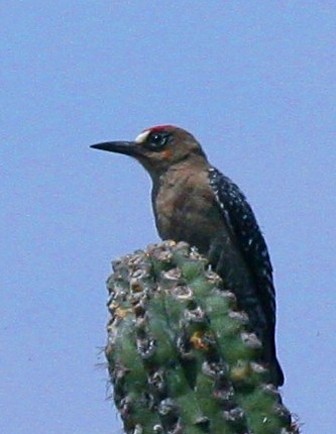Gray-breasted Woodpecker
Its natural habitats are subtropical or tropical moist lowland forests and subtropical or tropical high-altitude shrubland.

Original source: Original dominic sherony , edited by User:SadalmelikPermission(Reusing this file) This file is licensed under the Creative Commons Attribution-Share Alike 2.0 Generic license.You are free:to share – to copy, distribute and transmit the work
Author: Original dominic sherony , edited by User:SadalmelikPermission(Reusing this file) This file is licensed under the Creative Commons Attribution-Share Alike 2.0 Generic license.You are free:to share – to copy, distribute and transmit the work
The Gray-breasted Woodpecker is classified as Least Concern. Does not qualify for a more at risk category. Widespread and abundant taxa are included in this category.
Gray-breasted Woodpecker, Citreoline and Mountain Trogons, Lesser Ground Cuckoo, Emerald Toucanet, Russet-crowned Motmot, ten Orioles, including Spot-breasted and Black-vented, and Orange-breasted Bunting, among many others. A relaxed tour with five and four nights at a delightful Oaxaca City hotel and in two large houses overlooking the Pacific and one night in mountain cabins. More
The Gray-breasted Woodpecker is part of cluster of "zebra-backed" species very similar to eastern North America's common Red-bellied Woodpecker. Some ornithologists have lumped two or more of the species in the cluster together, but others insist that they are all separate. In other words, here evolution is at an in-between stage, where races are very well delimited, but it's debatable whether the races are species yet. More
Family : Picidae
Genus : Melanerpes
Species : hypopolius
Authority : (Wagler, 1829)
